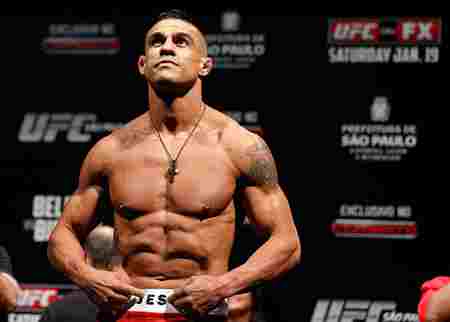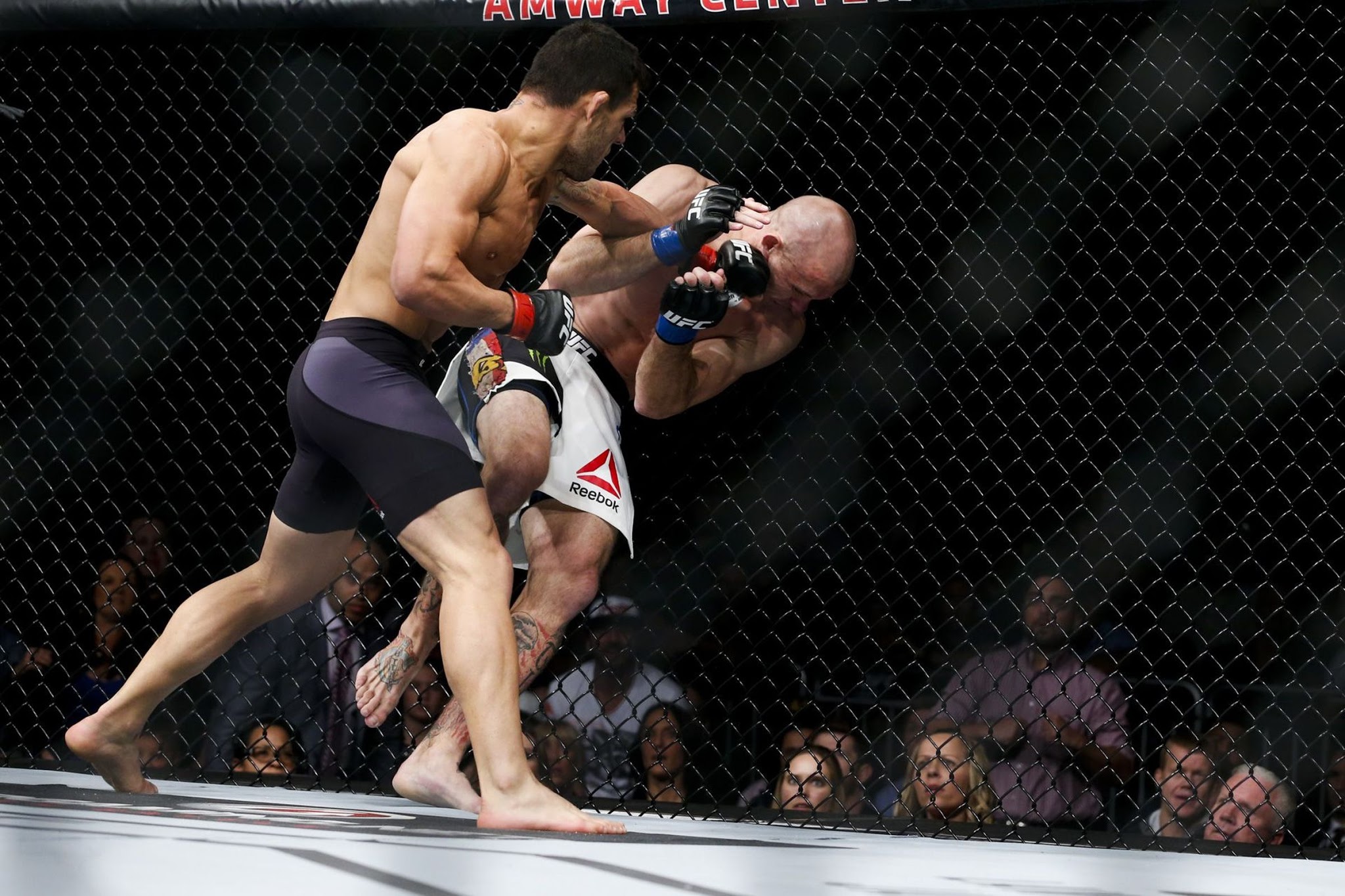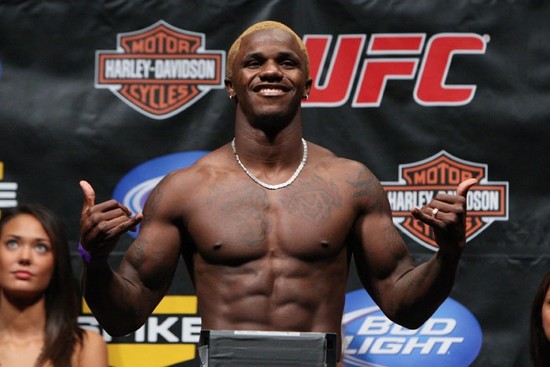In professional sports, the athletes are always looking for an advantage. This is why teams and fighters watch tape on their opponents, train additional hours, and find other ways to stay one step ahead of their opposition. Today, we see the mixed martial arts world continue to battle with the practice of employing TRT (testosterone replacement therapy), and with his victory on Saturday night, Vitor Belfort unwittingly became the poster boy for the controversy.
For the fifth time since returning to the Ultimate Fighting Championship in 2009, Belfort finished his opponent in highlight reel fashion. Going into UFC on FX 8, many people felt that Luke Rockhold had the ability to defeat Vitor if the fight lasted beyond the first three minutes. But Belfort didn’t need that long, as he dispatched Rockhold at the 2:32 mark in the first round, effectively staking his claim as the top contender for the middleweight championship, pending the outcome of the title fight between Anderson Silva and Chris Weidman at UFC 162 in July.
At the same time, Belfort also placed himself in the crosshairs of those who stand against the use of TRT in the MMA world. As the fight was built up, many questions were asked about Vitor’s admitted TRT usage, but very few answers were given. During the post-fight press conference, a reporter attempted to ask a question about the medical practice, only to be waved away as if he asked an irrelevant question. That’s the way MMA promoters, media, commissions, and fans have handled the controversy up to this point in time. Instead of developing a firm understanding of and defense against the usage of TRT by its competitors, TRT has been shoveled under the rug like a problem that will just fade away if ignored.
The purpose of the therapy is still questionable at this point. Those who are granted TRT therapeutic use exemptions suffer from a lower than normal count of testosterone than normal men. This could be due to a number of reasons, which include old age, birth defects, head injuries, and past usage of masking agents to hide steroid usage. The reason behind the granting of the therapeutic use exemption is almost never divulged, which leaves the masses with the task of having to assume why an athlete has been allowed to use TRT. Because he is only 36 years of age, some may wonder why Belfort is using TRT, but the fact is, he’s been on the wrong side of a failed drug test in the past.
With that fact in mind, Belfort has become the poster boy for TRT usage in mixed martial arts. There are those think he’s using it to cover up for past usage, and others who will point to his increased age. Either way, the questions around his recent run of success and physical appearance will only continue as he gets closer to another middleweight title shot. In other sports, when athletes are found to have been using performance-enhancing drugs, they are forced to endure questions from the media and fans alike. Not in mixed martial arts, however; instead, this sport, and its biggest promotion in the UFC, has continued to look the other way as the controversy continues to build steam.
The questions around testosterone replacement therapy need to be answered, both by those with firsthand knowledge, and those with the power to do something before it has a disastrous effect on mixed martial arts. Many consider it cheating, or a way to correct the effects of years of cheating. Either way, until these questions answered, fighters using TRT, including Vitor Belfort, will remain under a cloud of suspicion. And yet, for now at least, and whether we want to accept it or not, TRT is here to stay in mixed martial arts, until the next scientific breakthrough of a treatment is revealed. After all, if you’re an athlete who has seen the career renaissance of the “Phenom,” wouldn’t you at least be curious?




